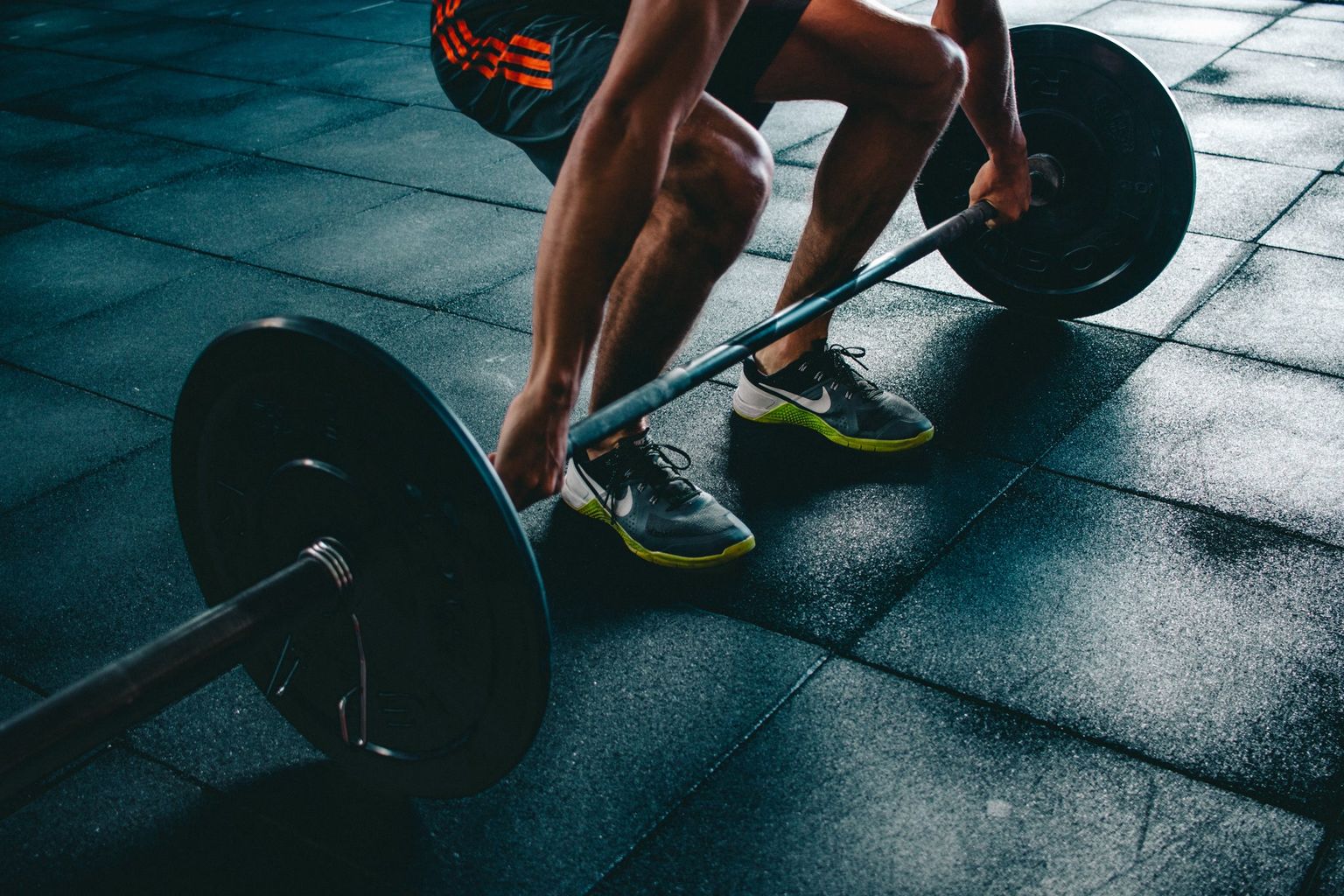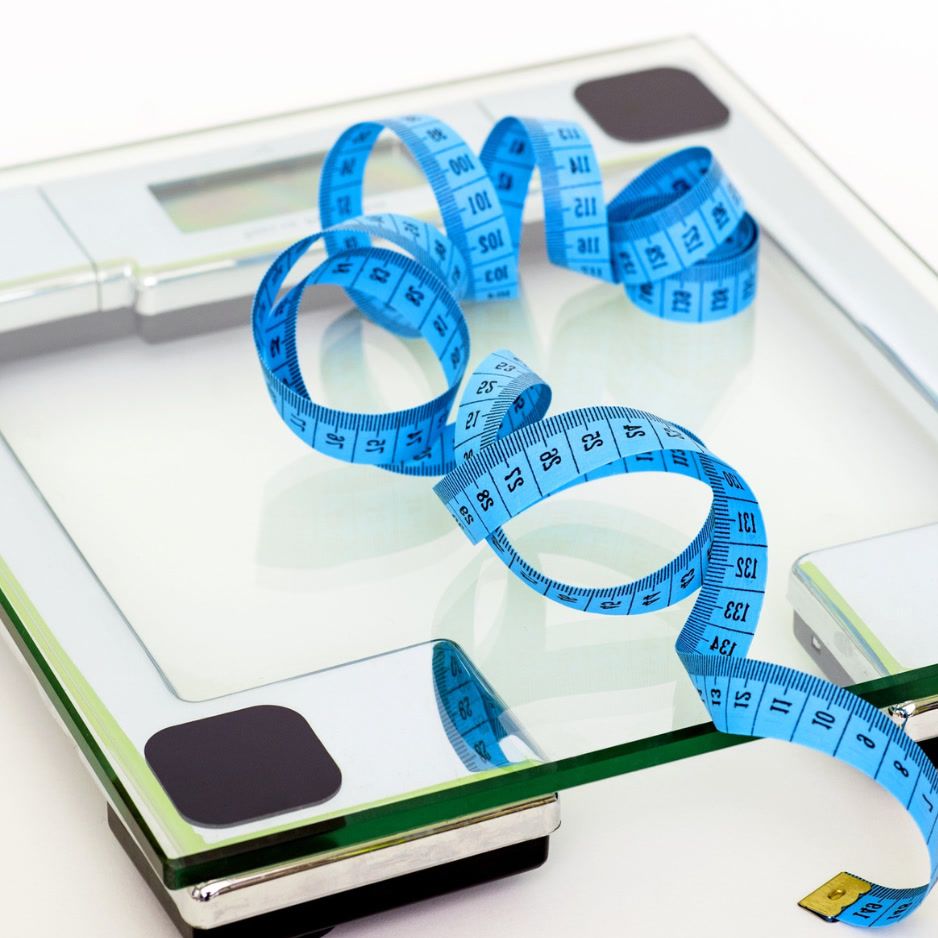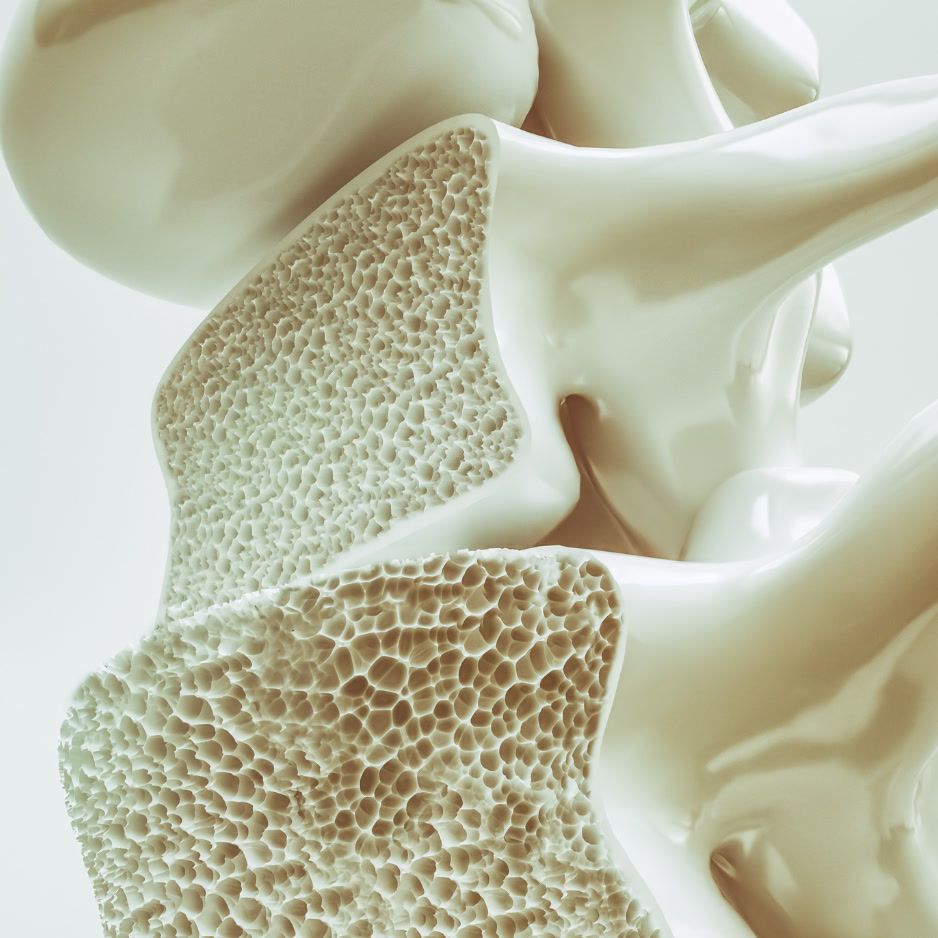The Ultimate Weight-Loss Tools Guide
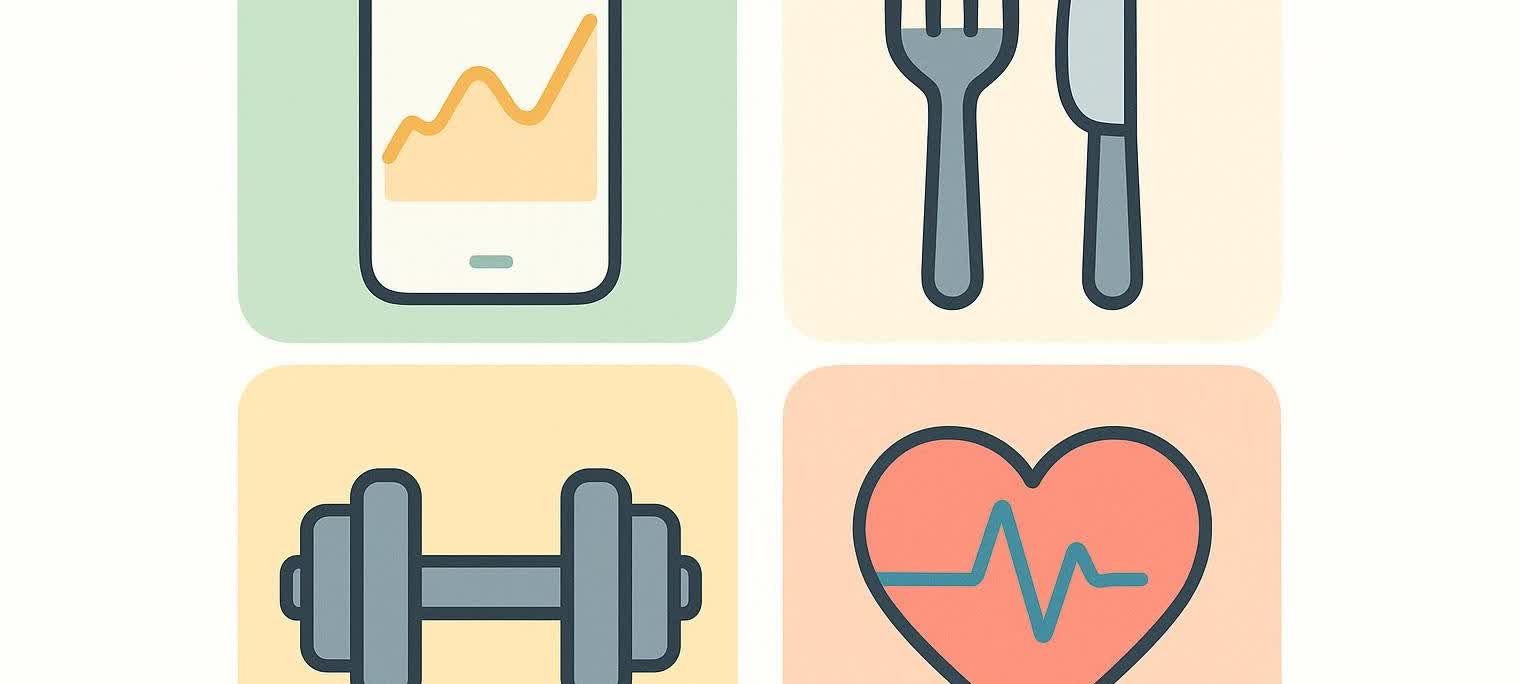
The Ultimate Weight-Loss Tools Guide: Apps, Kitchen Gadgets, Equipment & Clinical Tests
Losing weight is rarely about willpower alone—it’s about creating an environment stacked in your favor. Modern weight-loss tools can remove friction, add accountability, and give you objective feedback so you know your efforts are paying off.
From calorie-counting apps on your phone to medical-grade DEXA scans, the right toolkit can accelerate fat-loss results while saving time and mental energy.
Below is a one-stop roadmap that organizes today’s most effective tools into four key categories: digital tools, kitchen gadgets, fitness equipment, and clinical assessments—so you can build a personalized arsenal that matches your lifestyle and goals.
Table of Contents
- Why Weight Loss Tools Matter
- Digital Tools for Tracking and Accountability
- Kitchen Tools for Portion Control and the 30/30/30 Kickstart
- Fitness Tools for At-Home Workouts
- Clinical Tools for Deep Body Insights
- How to Choose the Right Tools
- Frequently Asked Questions
- Take the Next Step
Why Weight Loss Tools Matter
Behavior scientists call it choice architecture: the easier a behavior is, the more likely it happens. Good tools do one (or more) of three things:
- Automate – Offload manual work like calorie math or portion sizing.
- Measure – Provide objective data so you can adjust before plateaus hit.
- Motivate – Deliver nudges, streaks, or social accountability when willpower dips.
The free NHS Weight Loss Plan app, for example, couples meal planning with weekly goals and is designed to help users stick with healthier habits over 12 weeks.
Digital Tools for Tracking and Accountability
1. Measurement & Tracking – Your Motivation Engine
A 12-month randomized controlled trial published in Obesity found that adults who adhered closely to logging food, activity, and weight had significantly higher odds—almost double—of losing at least 5 % of their body weight compared with low-adherence users (Burke et al., 2025).
| Digital Tool | Role |
|---|---|
| Macro-tracking apps (MyFitnessPal, Cronometer) | Log food; set calorie/macro targets |
| Trend-weight apps (Happy Scale) | Smooth scale noise to reveal true weekly loss |
| Smart scales (Withings Body Comp) | Auto-upload weight & body-fat estimates |
| Wearables (Apple Watch, WHOOP) | Pair heart-rate data with movement to refine calorie burn |
2. Best-in-Class Tracking Apps
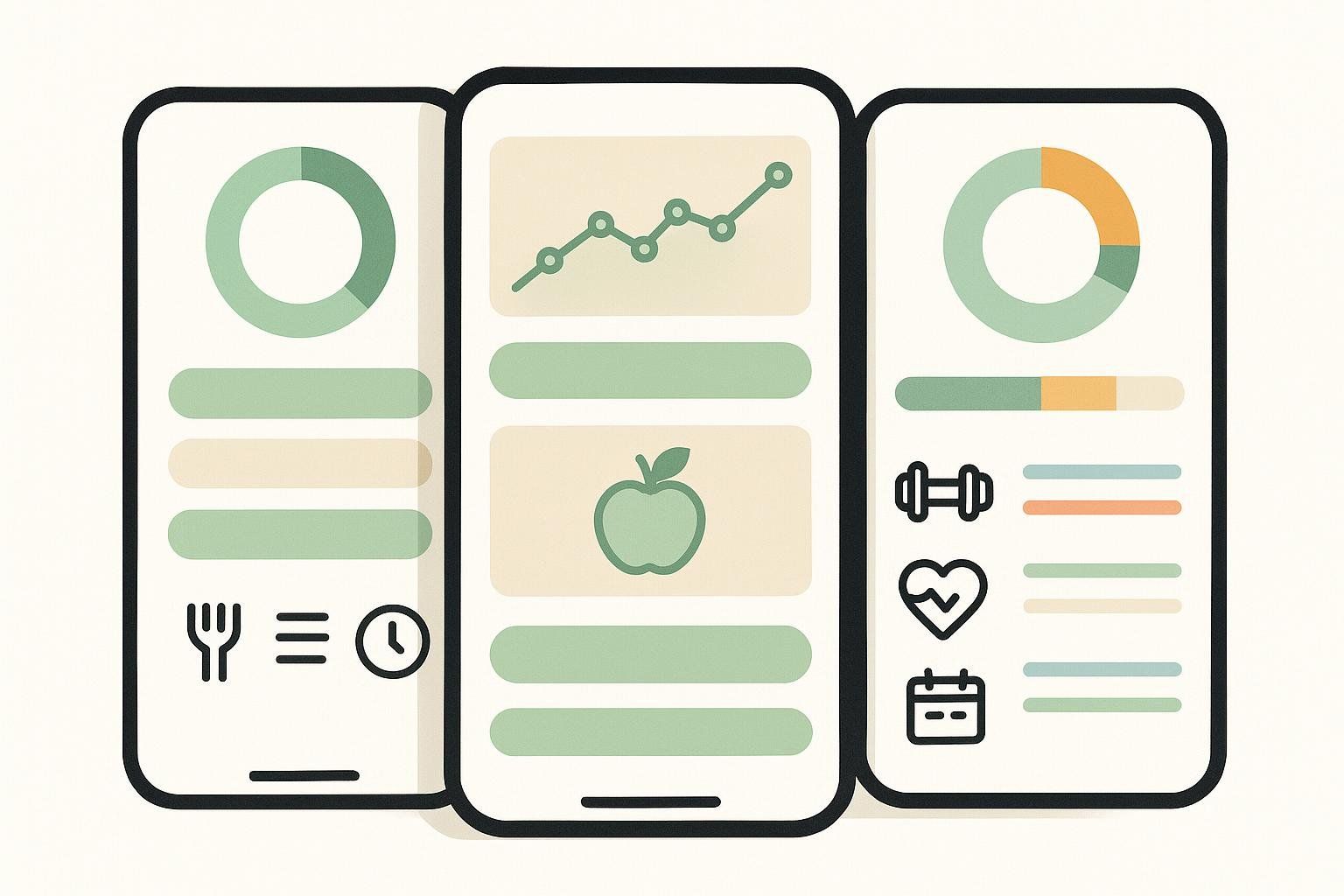
| App | Price | Stand-out Feature | Integrations | Ideal For |
|---|---|---|---|---|
| MyFitnessPal | Free / $19.99 mo | 14-million food database & barcode scan | Apple Health, Garmin, Fitbit | Beginners |
| Cronometer | Free / $8.99 mo | Micronutrient targets & biomarker tracking | Oura, Polar, Google Fit | Data geeks |
| Lose It! | Free / $39.99 yr | Photo-based food logging | Apple Health, Withings | Visual learners |
| MacroFactor | $11.99 mo | Auto-adjusting calorie budgets | Fitbit, Google Fit | Plateau-prone users |
📈 New to macros? Start with our Ultimate Guide to Tracking Macros.
3. Top Wearables & Smart Scales
| Device | Key Metric | Battery Life | Why It Helps |
|---|---|---|---|
| Apple Watch 9 | HR & energy expenditure | 18 hrs | Refines calorie estimates |
| WHOOP 4.0 | HRV & strain score | 4–5 days | Optimizes recovery |
| Withings Body Comp | Weight & body-fat | 12 mo | Seamless auto-sync |
| Garmin Forerunner 265 | Zone-based cardio metrics | 13 days | Guides fat-burn cardio |
Explore more tech in Top Fitness Apps and Wearables.
Kitchen Tools for Portion Control and the 30/30/30 Kickstart
Healthline’s roundup underscores how simple gadgets like digital scales and divided plates can curb accidental overeating—an idea reflected in the tools below.
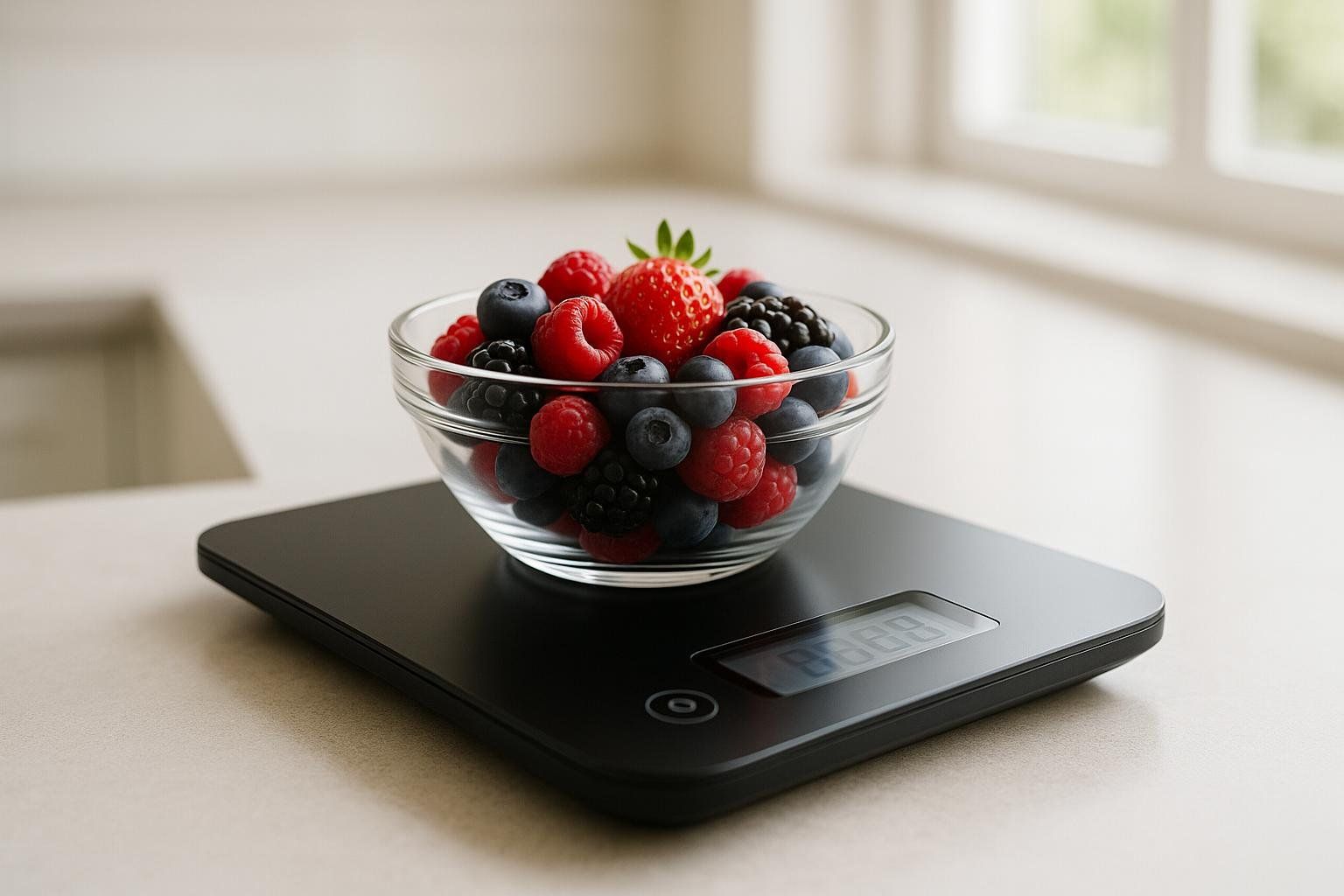
1. Core Portion-Control Gadgets
| Tool | Approx. Cost | What It Does | Time Saved |
|---|---|---|---|
| Digital kitchen scale | $20 | Gram-accurate weighing | ~5 min/meal |
| Meal-prep containers | $25 (10-pack) | Built-in sections | Skip mid-week measuring |
| Instant-read thermometer | $15 | Perfect protein temps | Prevents waste |
| Food chopper/dicer | $30 | Uniform veggie cuts | 10 min/recipe |
| Portion-control plates | $18 | Visual meal cues | Quick serving accuracy |
2. Toolkit for the 30/30/30 Morning Kickstart
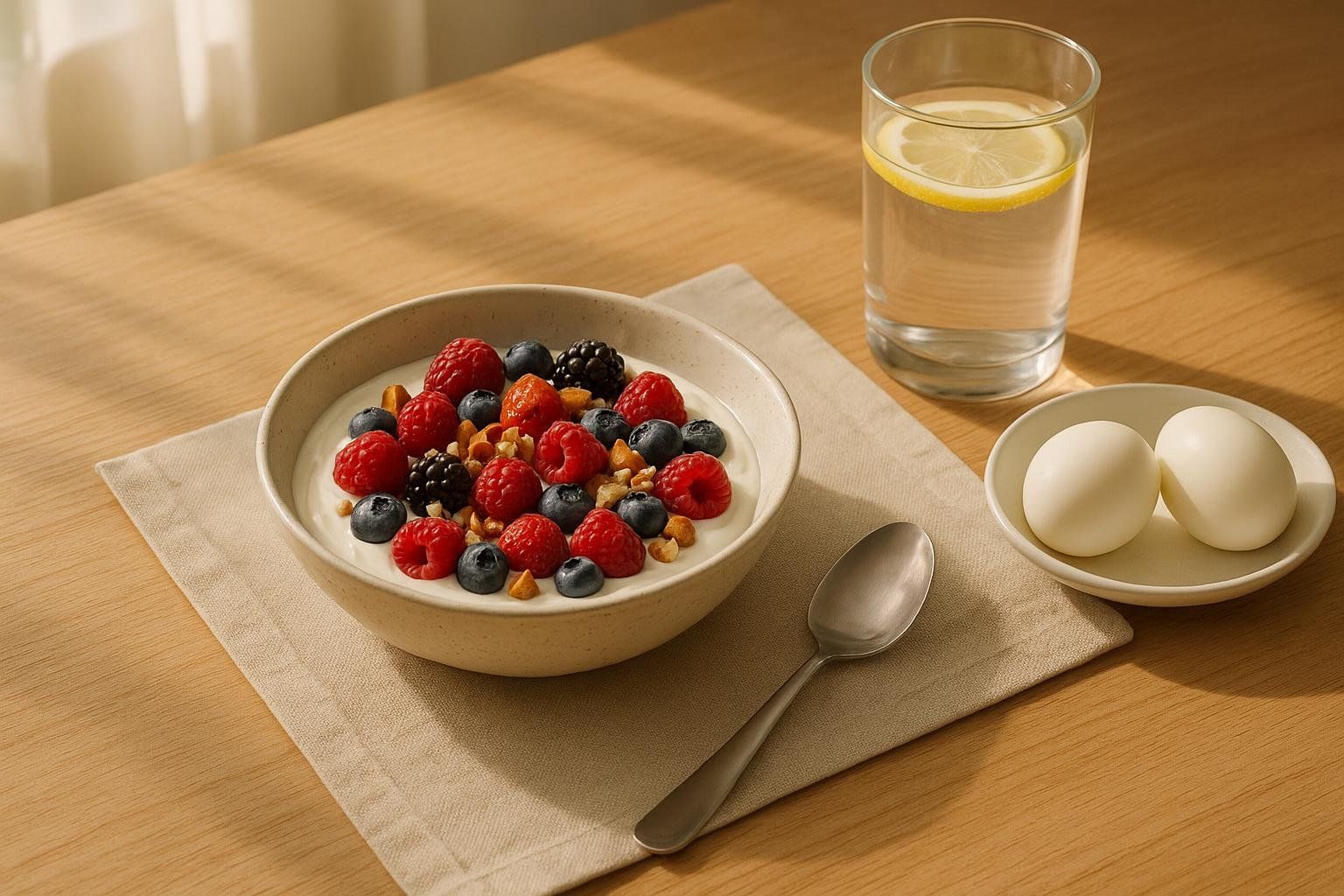
The viral 30/30/30 method—30 g protein within 30 minutes of waking plus 30 minutes of low-intensity movement—gets easier with the right gadgets:
| Hurdle | Supporting Tool | Why It Helps |
|---|---|---|
| Unsure of 30 g protein | Kitchen scale + macro app | Weigh & auto-log breakfast |
| No time to cook | Blender bottle | Mix shake & go |
| Forget to move | Smartwatch alert | Daily 30-min walk reminder |
| Consistency fades | Habit-streak app | Visualize chain of success |
The linked Healthline article explains that the 30/30/30 method’s components—such as a high-protein breakfast—support satiety and blood-sugar control, while early movement helps ensure you complete your cardiovascular activity before daily obligations arise.
Fitness Tools for At-Home Workouts
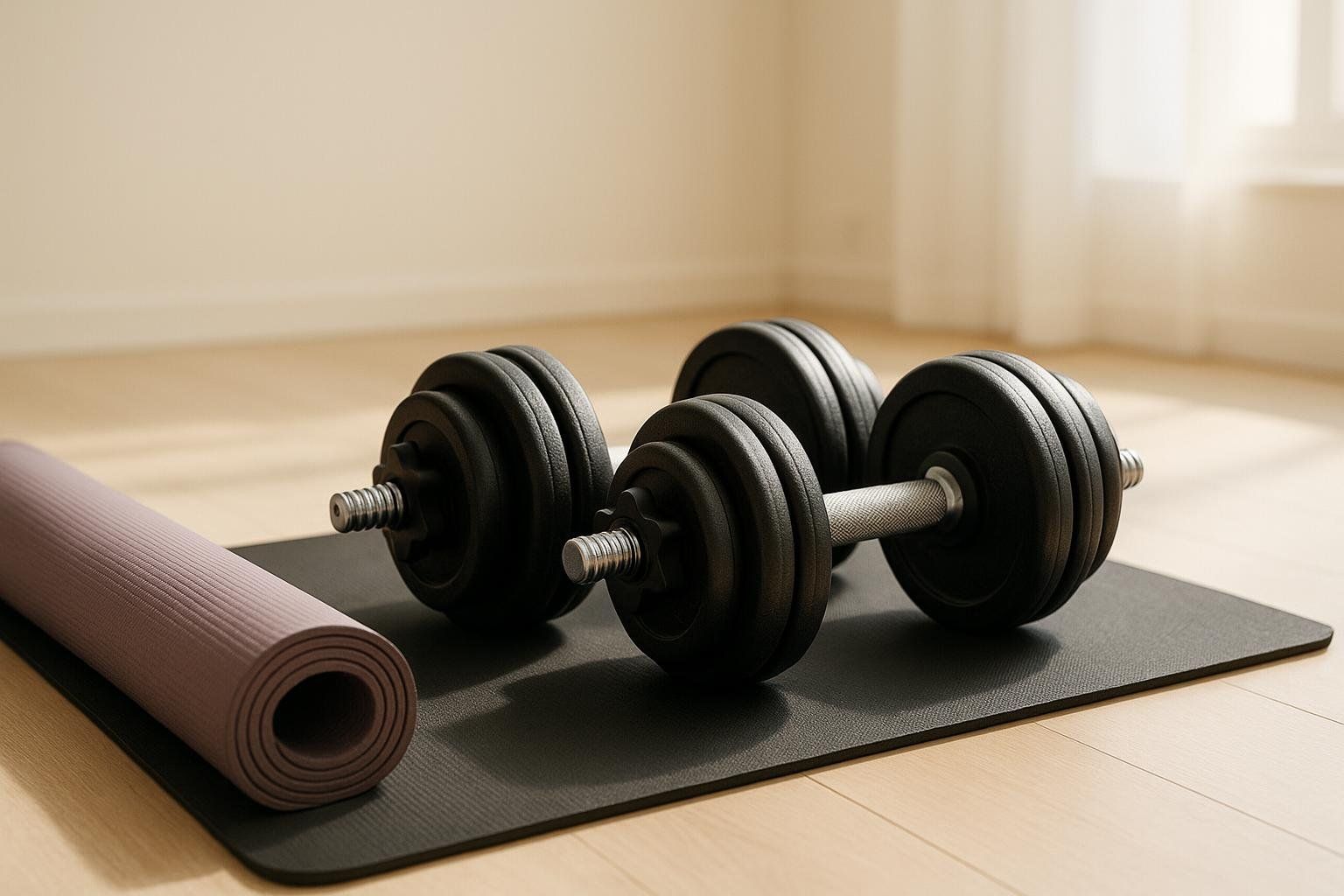
| Equipment | Storage Footprint* | Calories Burned† | Best For |
|-----------|-------------------*|------------------†|----------|
| Adjustable dumbbells | ~1 sq ft | 250–400 kcal/hr | Full-body resistance |
| Kettlebell 35 lb | 1 sq ft | 400–600 kcal/hr | HIIT fans |
| Foldable rower | ~4 sq ft | 500–700 kcal/hr | Low-impact cardio |
| Jump rope | <0.1 sq ft | 600–1,000 kcal/hr | Travelers |
| Mini stair stepper | ~1.4 sq ft | 350–500 kcal/hr | Desk-side cardio |
*Footprint when stowed.
†Calories vary by body weight & intensity.
Clinical Tools for Deep Body Insights
| Assessment | What It Measures | Why It Beats DIY |
|---|---|---|
| DEXA scan | Fat, lean, bone, visceral fat | ±1 % error vs 5–8 % for smart scales |
| RMR test | Calories burned at rest | Lab-measured metabolism—more accurate than predictive equations, giving a truly personalized calorie target |
| VO₂ Max test | Max aerobic capacity | Lab-grade gas analysis for individualized training zones—far beyond age-based formula estimates |
| Blood panel | Lipids, glucose, hormones | Detects hidden issues |
How Often to Get DEXA Scans
Most people thrive on quarterly DEXA scans. Athletes in aggressive phases may go bi-monthly; general-wellness clients can stretch to every six months.
Gauge Safe Loss Speed with Data
| Clinical Tool | Insight |
|---|---|
| DEXA (quarterly) | Flags muscle loss early |
| RMR (semi-annual) | Spots metabolic slowdown |
Safe weekly loss: 0.5–1 % of body weight (Beaumont Health).
DEXA exposes you to a very low radiation dose—well below a single day of natural background radiation (RadiologyInfo.org).
🗓 Ready for objective feedback? Book a BodySpec DEXA scan and lock in quarterly appointments.
How to Choose the Right Tools
Choosing the right weight-loss tools is crucial for success and depends on your individual circumstances. The table below provides guidance based on different user needs:
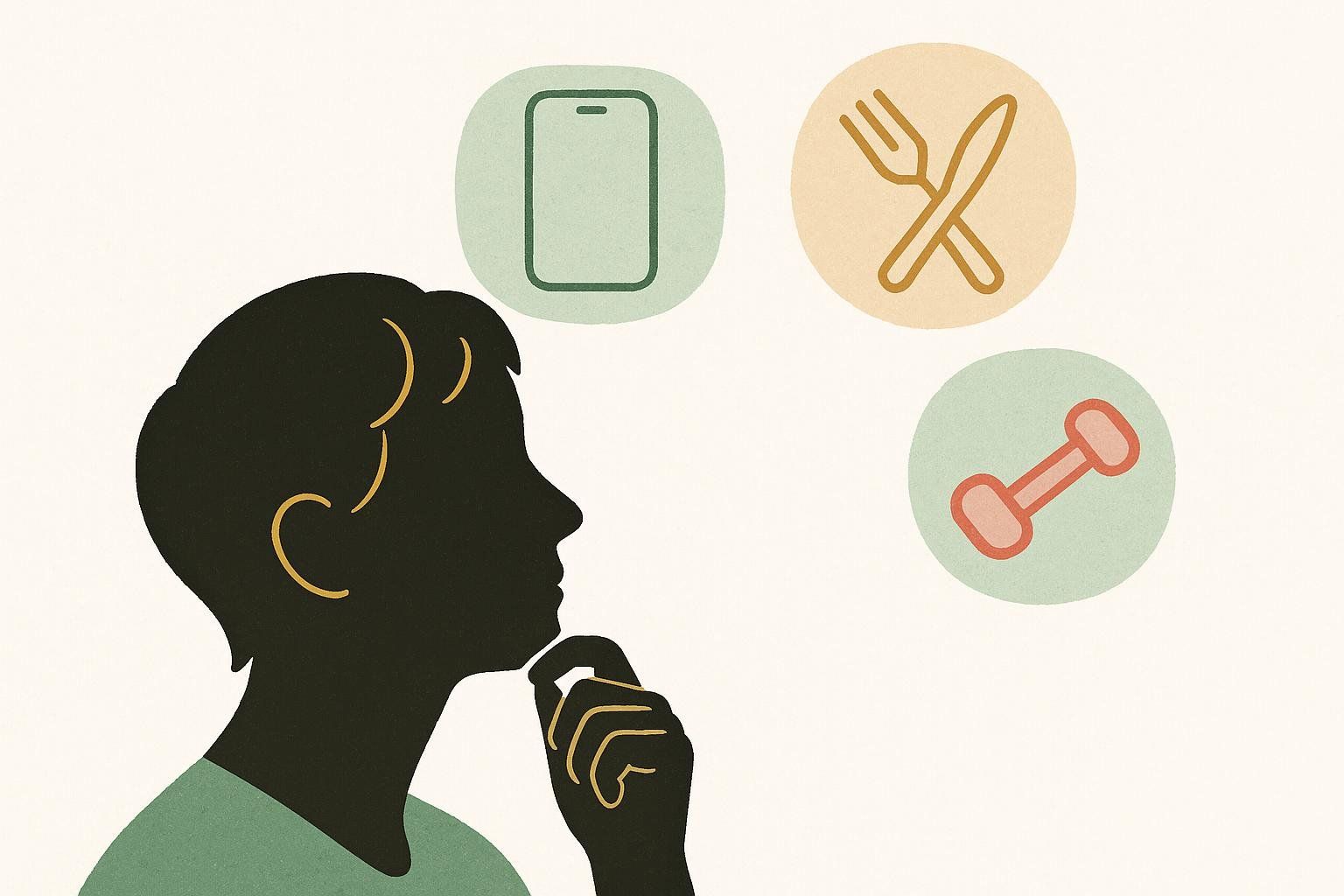
| If You’re… | Prioritize | Skip |
|---|---|---|
| Tech-Savvy Tracker | API-friendly apps, smart scale, WHOOP | Bulky single-purpose machines |
| Busy Home Cook | Meal-prep containers, kitchen scale | Time-intensive apps |
| Clinical Seeker | DEXA & RMR tests | Generic BMI calculators |
Start with one tool from each category that fits your lifestyle, then layer on more as habits solidify.
Frequently Asked Questions
What is the single best weight-loss tool?
There isn’t one. The NHS weight-loss plan shows combining tracking, exercise, and dietary strategies beats relying on any single tactic.
Are free apps good enough?
Yes for basics, but premium tiers remove ads and unlock deeper analytics that can shorten trial-and-error.
How often should I get a DEXA scan?
Quarterly (every ~3 months) balances insight with cost and minimal radiation. Athletes on tight timelines may scan every 6–8 weeks.
What if I hit a plateau?
Has your calorie deficit decreased? Metabolic slowdown is another culprit. A lab-based RMR test or updated macro targets often restarts progress.
Take the Next Step
Your toolkit is only powerful if you use it. Pick one upgrade today—download an app, grab a kitchen scale, or schedule a quarterly DEXA scan—and set a reminder to revisit this guide in two weeks. Momentum compounds.

Book your BodySpec DEXA scan now and get the gold-standard metrics that make every other weight-loss tool smarter.
